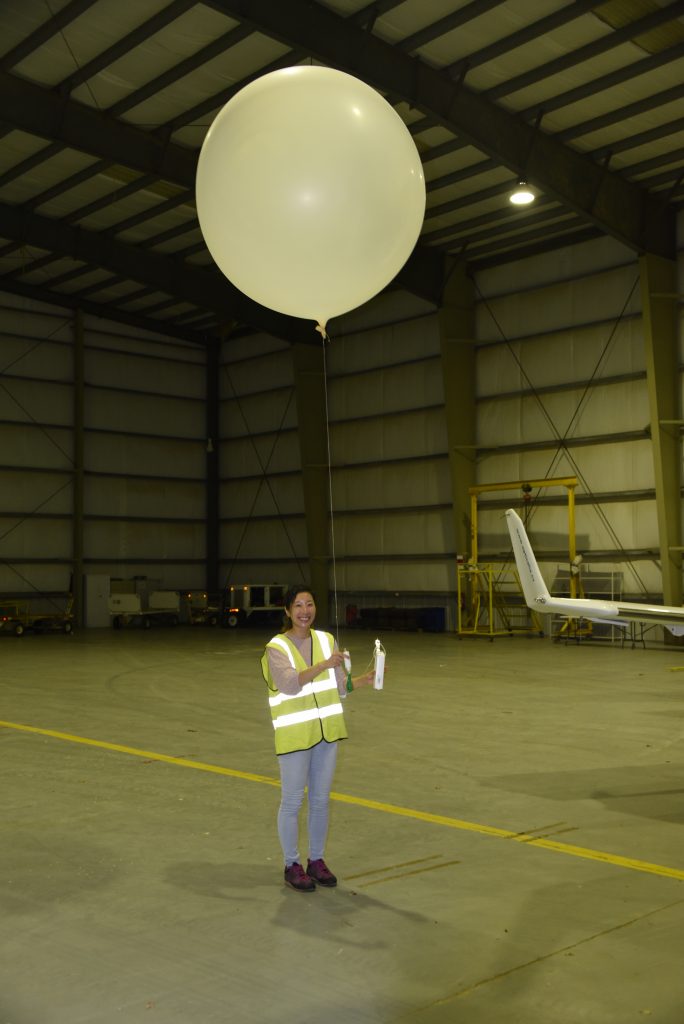Maurus Borne is a PhD student at the Karslruhe Institute of Technology in Germany and part of the Waves to Weather Transregional Collaborative Research Project. He is researching the impact of Aeolus wind measurements in the tropics in European Centre for Medium-Range Weather Forecasts (ECMWF) and German National Meteorological Service (DWD) operational models with a particular focus on the West African Monsoon.
ECWMF was the first weather service to assimilate Aeolus wind observations into their Numerical Weather Prediction (NWP) models in January 2020, with DWD following suit after Aeolus data went public in May 2020. Extensive tests performed by ECWMF prior to the assimilation showed that Aeolus data significantly improved weather forecasts, especially in the tropics and the Southern hemisphere. It is therefore especially crucial to validate and assess the quality of Aeolus wind information in these regions. And that is exactly what the aim of the Joint Aeolus Tropical Atlantic Campaign (JATAC) is.
With core JATAC operations taking place in Cape Verde this September, Maurus joined the German Aerospace Centre (DLR)’s AVATART team on Sal Island to perform his own validation work using radiosondes.
The Everyday Struggles of Launching a Radiosonde
Depending on weather conditions, Maurus launches one to six radiosondes every day from Amílcar Cabral International Airport. He usually starts with an early morning launch, getting up before sunrise to head out to the airport. He often crosses paths with the German AVATART and French CADDIWA teams as they prepare for morning Aeolus underflights in the hangar next door to his field office, a small cubicle where he stores his GRAW DFM-09 radiosondes and other equipment.
The radiosonde itself is a small electronic device used to measure meteorological variables such as air pressure, temperature, humidity and wind speed. Encased in a Styrofoam body for protection, the instrument is attached to a weather balloon filled with helium and lifted into the upper atmosphere to altitudes of 20 to 25 km. Modern radiosondes like the ones Maurus uses also have a GPS receiver that calculates wind speed and direction and a radio transmitter that sends the data back to the ground.
Launching the balloons is easy enough in good weather: all Maurus has to do is let go and they will instantly take flight. Over the course of one month, he has mastered the ability to inflate a balloon just right.
“If they’re too small, it takes too long for them to go up. If they’re too big, they’ll go up fast, but might pop sooner than I’d like,” he explains.
Days when tropical storms pass over Cape Verde are great for data collection, but can be a pain for balloon launching. On such days, Maurus tries to launch a balloon every six hours. Sometimes the wind makes the balloons skittish and nearly blows them back into the hangar nearby.
Radiosonde Data Can Be a Precious Commodity
Radiosondes are a great way to assess the quality of Aeolus Rayleigh and Mie wind observations between ascending and descending orbits. They are unique among observation systems as they provide complete vertical profiles to altitudes of 25 km with an incomparable high accuracy.
“They always measure the interesting part of the troposphere, and pop between 100 and 40hPa in the stratosphere,” Maurus says. “The information collected at those altitudes can be used for Aeolus validation.”

Monitoring the balloon’s progress after launch (Credits: ESA)
His measurements not only contribute to his own research, but are of very high interest to the local Cape Verde meteorological services that have limited access to in-situ observations. This is also one of the reasons Aeolus data at the tropics is so valuable in general: there are few meteorological stations on the ground to count on for daily forecasts. While he is conducting his launches on Sal, Maurus therefore shares his data with the local meteorological services on a daily basis.
A Reason to Smile
Normally, launching radiosondes is a two-person job, but there is no shortage of volunteers to help Maurus out. He recruits them from other JATAC campaigns based on Sal. Everyone from local students eager to experience all that a field campaign has to offer to senior staff on their down days, have offered to help Maurus with his radiosonde launches, even if it means waking up before the sun is up.
“I think everyone enjoys it,” Maurus says. “It makes them feel like a kid again.”
You only have to look at his collection of photos of people posing with his balloons to see he is right. There is one thing they all have in common besides the impressive size of the weather balloons: every single person has a big smile on their face.

Postdoctoral researcher Azusa Takeishi came to Cape Verde to provide daily dust forecasts for the CADDIWA campaign and in her time off helps Maurus launch radiosondes. (Credits: ESA)
Post from: Andrada Coos (EJR-Quartz) and the ESA team in Cabo Verde








Discussion: no comments